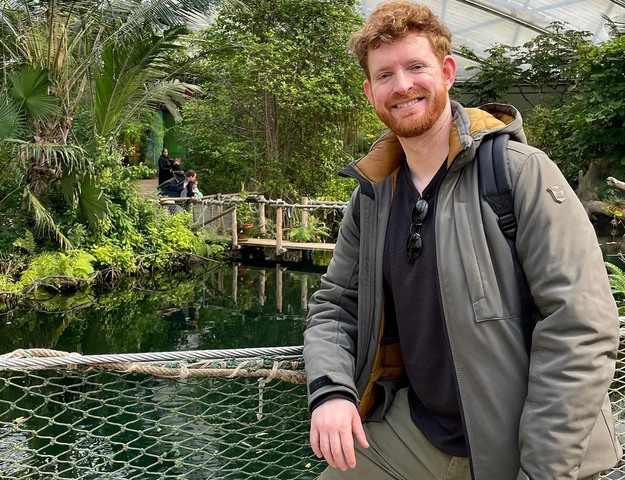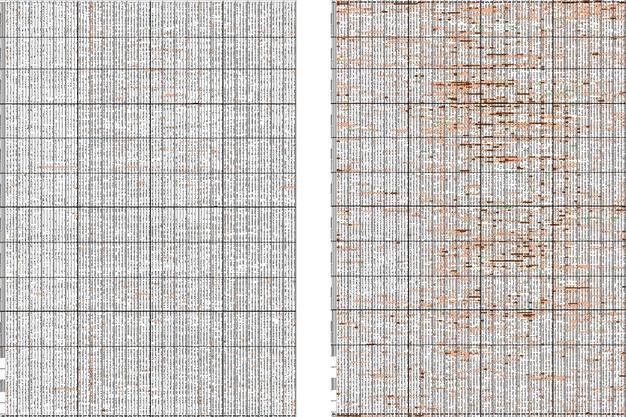It's Thursday afternoon, around three o'clock, in the heat of the summer. The weather features a mix of clouds and sunshine, accompanied by a brisk wind. Anyone familiar with the electricity market knows that hourly prices can dip below zero—and they are just about to do so. This presents a great opportunity for purchasing electricity, but could there be an even better option?
"Yes", says Lars van Os of Dutcy company No-Nonsense Energieadvies. On the Dutch imbalance market, prices have fallen to minus 60 euros per megawatt hour for this quarter. This highlights the complexities of the energy market and illustrates how Lars's consulting firm, which he started eighteen months ago, can assist greenhouse horticulture companies in navigating these challenges.
 Lars van Os
Lars van Os
Fear of imbalance
After a financial education, Lars 'accidentally' ended up in the horticulture sector about six years ago. Living in Westland, the sector is 'in his heart'. At his first employer, he learned about short-term energy trading and, at another consultancy firm, long-term trading as well.
With his own company, founded in April 2023, he combines his knowledge of both industries. "Right from the start I had some great clients. I'm working on it 24/7 and I need to be, but it feels more like a hobby than work to me."
Most of the work Lars does for horticulturists is focused on trading the short-term energy markets. Eighty percent of the time it is focused on trading on the imbalance market, Lars finds that horticulturists are rather "reluctant" to do so themselves.
"Whereas on the APX market, prices this year vary between -100 and +200 euros, the peaks and troughs on the imbalance market are much bigger. With lows to -1000 and peaks to +2000, there is a lot to gain, but also a lot to lose."
Increasingly extreme
Electricity prices fluctuate considerably. Standard 'favorable' times like before the outbreak of the energy crisis, of 7.45 am and 4.15 pm, don't exist anymore. "The market is much more fickle," he says. It makes Lars have his mobile phone and iPad with him at all times. "I can work anywhere, and I do."
Lars works for smaller greenhouse entrepreneurs who have their hands full with all their other tasks as well as for 'big boys'. "Seasun is one of my clients. That company, with 63 hectares of glass, is a very nice one to manage the CHPs for. These kinds of companies also need an external specialist for CHP control. If I do my job well, it always pays off."
A few years back, when Lars took his first steps in greenhouse horticulture, a horticulturist could "still get away reasonably well" with pluses of up to 500 euros per megawatt hour and minuses of up to 50 euros. Over the past six years, things changed. To show that graphically, Lars often shows horticulturists an Excel sheet. "That shows how fast the market has changed," he says. "Showing this Excel is often decisive for horticulturists with whom I sit at the table."

Graphical representation of the Excel showing that the energy market has changed very quickly in recent years. On the left is data from 2019, and on the right is from 2023. The browner, the lower the imbalance compared to the APX, and the greener the higher the imbalance compared to the APX. Enlargement of the graphical representation of the data is available, for 2019 and 2023.
Switching with CHP
Many greenhouse entrepreneurs still trade exclusively on the APX market. They consider the imbalance market "risky" and that risk, there is, Lars acknowledges. "But after six years, I dare say I can play the game well. That means you can also score particularly well on the imbalance market, provided you are continuously serious about it like I am."
Lars finds that horticulturists are sometimes hesitant when having their CHP controlled externally. They are afraid that it will be "continuously switched on and off". He controls it via the DNO box. Bidding is done once a day, in the morning. Then the settings for that day are also entered immediately. "After that, I can always make some adjustments in the control, or intervene manually by switching something on or off before this was the planning."
The latter, which happens regularly, but generally not more than once a day. "You should always be able to get by with preferably two, but a maximum of three switches daily, I think. Usually once in the morning, once in the evening, and then once more when emergency power is declared, for instance."
There is no doubt that, regardless of energy opportunities, cultivation always comes first. "Sometimes we also take our losses by not turning a CHP on-off once, but that rarely happens. When there is heat demand or CO2 demand for cultivation and a must-run situation for cultivation, that always comes first, at the expense of the energy trading result."
There have only been a few times in Lars' career when a fourth switch was needed. "Then it's because emergency power was declared a second time on the same day anyway."
Emergency power
In addition to the game with APX and imbalance, emergency power is also taken into account. "If you anticipate this well and think carefully about what are expensive and cheaper days, money can be made here too. The condition is that you subscribe via the DNO box or your energy supplier and make your power available for 24 hours to help balance the grid on demand."
There are also the Intraday market and the Intraday+, the congestion market, Lars lists. He also takes those factors into account. All to achieve the cheapest possible energy costs for a greenhouse farm. "I have been playing this game for about six years and because of this, you start to recognize patterns. Moreover, we have giga quantities of data that we compare with the help of programs to get smarter."
Beating the market as well as humans
Trading energy is a 24/7 occupation. On the day of the interview, 15 August, Lars says a situation occurred that shows why this matters. At 11 am, the switching schedule of a CHP at a horticulturist's site was automatically running down. Lars predicted, however, that imbalance prices would rise. In 15 minutes the price changed from 173 euros to 400 euros. "By manually running the CHP 30 minutes longer, this grower was still able to benefit from two nice prices," he says. Depending on how many megawatt hours of installed capacity the customer has, the amount can quickly add up.
Since the outbreak of the energy crisis, entrepreneurs have become more aware of the extremes in the energy market. As a result, responding properly is still a challenge. "Not everyone realizes that a lot of people are thinking about steering energy systems. This sometimes results in people anticipating, say, a storm that is coming, but at the moment suprême the exact opposite happens. Gardeners try to beat the market, but you also have to beat all those people who are working on that steering."
Battery systems
One of the most recent developments is the rise of battery systems in the energy market. Just like every time a new technology is introduced, it causes disruption. "Anything new to the market can be called a disruptor. The explosion of battery power has put a dent in the market."
On some days, it has made good trading significantly more difficult, he explains. "One of the consequences of rapid charging and discharging of battery systems is that double-sidedness occurs. That means that in 15 minutes, the price can go very high, but also very low. That is disastrous for anyone buying electricity or feeding it back at that time. If you buy in, you automatically pay the highest price and if you feed in, you get the lowest price. You used to see this even on windy days, but now it is already so extreme that hours of both minus 1,000 and plus 1,800 euros occur. You can't do anything with that at all."
Still, Lars is positive about battery systems. "We definitely need storage capacity." Lars is also positive about heat pumps. "In my view, that will be an important tool in the future. Flexibility is the magic word for horticulturists to survive in the future."
Fixed tariff
Lars also helps greenhouse horticulture companies with long-term energy trading. When he does so, he stands alongside the grower to buy gas and electricity from energy companies up to five years ahead. Or to sell, as that too has happened on occasion in recent years, he confirms.
Greenhouse growers who use the services of No-Nonsense Energieadvies pay a fixed monthly rate that is indexed annually. The energy consultancy works with annual contracts, which always include a two-month probationary period. "I still work with all the clients from the beginning. No client has quit in a year and a half. Recently, there was another entrepreneur who after two months was positively surprised by what can and does happen in the energy market."
It makes Lars expect to continue playing the game successfully in the service of the horticulturist for a long time to come. "CHP control will not soon be done purely with AI, I expect. Humans are needed to weigh up all the nuances. The energy market is a market with feeling, and that feeling cannot be expressed in 0's and 1's."
For more information:
Lars van Os
No-Nonsense Energieadvies
Tel: +31 (0)6 40 19 45 11
[email protected]
www.nnenergieadvies.nl
